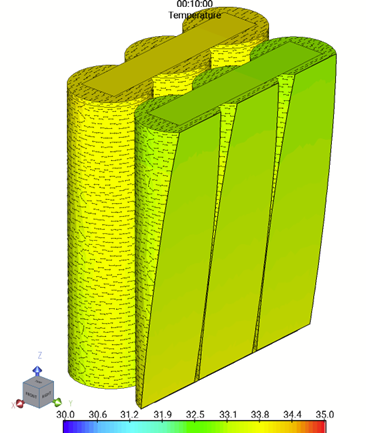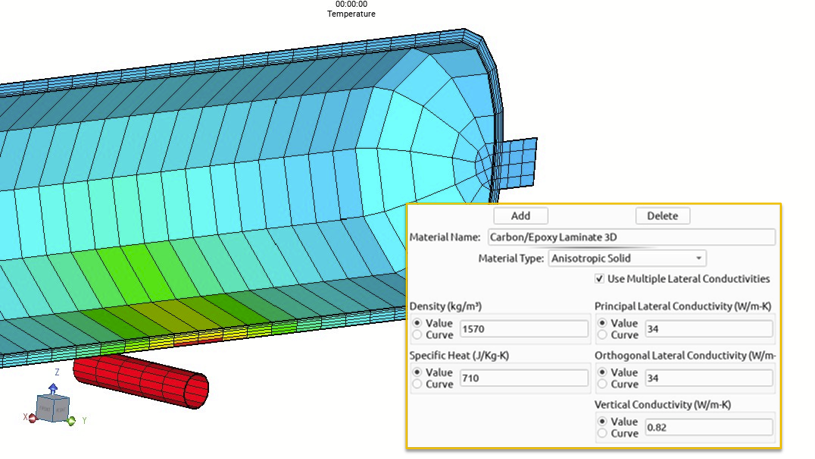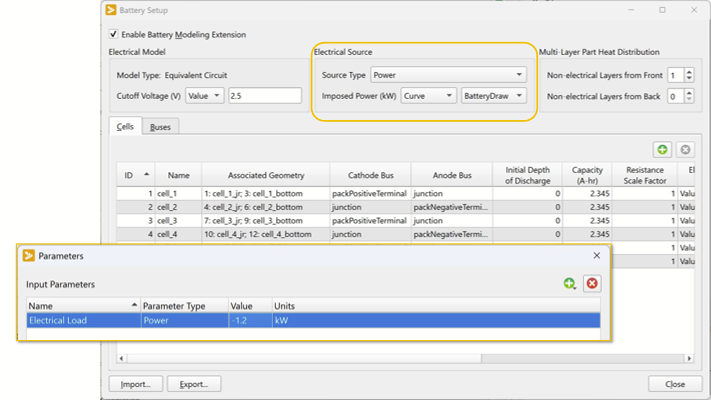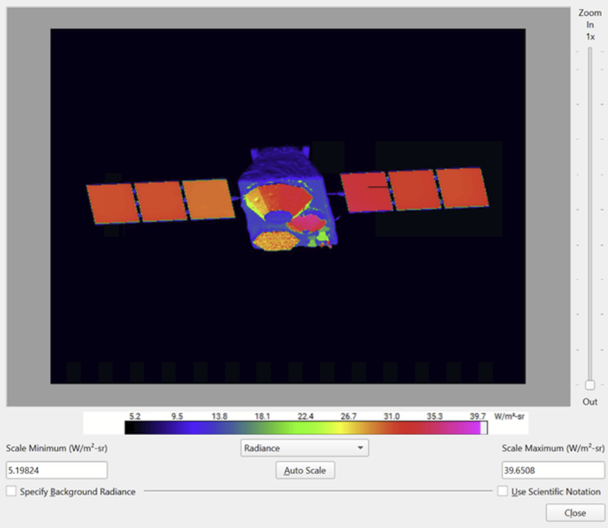Version 2025.2 of TAITherm, CoTherm, and MuSES brings new capabilities that advance human thermal comfort, electrification, and defense simulation. With this update, we’ve expanded the fidelity of our real-world modeling—from segment-level comfort outputs that let engineers fine-tune cabin experiences, to volume-element modeling for EV battery cells, to faster and more accurate satellite IR and shortwave infrared renderings. With 2025.2, we continue to raise the standard in thermal simulation, giving you the tools to design smarter, safer, and more resilient systems.
*Note: A TAI Support Site Account is required to download
TAITherm 2025.2
We’ve continued to expand TAITherm’s capabilities to deliver greater accuracy and flexibility in thermal and comfort simulations. The 2025.2 version focuses on advancing human thermal comfort modeling and improving the fidelity of battery cell analysis, giving engineers deeper insight into real-world performance and design optimization.
Advanced Cabin and Human Thermal Comfort Coupling
Building on previous releases, we’ve significantly enhanced our FMU (Functional Mock-up Unit) export capabilities to improve human thermal comfort simulations within system-level designs.
- Segment-Level Comfort Feedback: Continuing to build on the FMU export capabilities of previous releases, human thermal sensation and comfort can now be exchanged at the segment level through output parameters. This allows providing feedback on how hot or cold individual body parts are for controlling local thermal effectors such as heated seats, steering wheels, and radiant panels.
- Comprehensive 1D/0D System Coupling: When combined with whole-body sensation and comfort, this provides a comprehensive coupling to 1D/0D system simulations for advanced cabin thermal comfort and HVAC design.

Automotive & Battery Thermal Advancements
We’ve focused on improving the fidelity and flexibility of battery cell modeling to better support the evolving needs of electric vehicle development.
- Volume Elements for Battery Cells: You can now model battery cells using volume elements in addition to the existing shell elements. This allows for more detailed and accurate thermal analysis of the cell's internal structure and heat conduction paths.
- Power Input for Battery Pack Load: When specifying the load on a battery pack, you now have the flexibility to input this as power instead of being limited to only current. This simplifies the input process and aligns with how load is often defined in system-level thermal management.
- Anisotropic Conduction in Volume Elements: You can now model materials such as carbon fiber, fiberglass composite, or battery cells with dissimilar conductivities in each of the cardinal directions. This produces more accurate heat transfer and temperature predictions for these scenarios.



MuSES 2025.2
With 2025.2, we’ve introduced key improvements to MuSES that strengthen our defense-focused capabilities and accelerate analysis across complex IR rendering workflows. These updates enhance both accuracy and speed for users modeling satellite signatures, shortwave infrared behavior, and mission-critical thermal environments.
Defense & IR Rendering Capability Upgrades
Our defense-focused capabilities have received several upgrades, particularly in the realm of Infrared (IR) signature and rendering.
- Improved Satellite IR Rendering: We've made key improvements to the algorithms that handle satellite IR rendering, enabling enhanced capability and fidelity for simulating and analyzing satellite thermal signatures.

- Shortwave IR Rendering Speedup: Users performing shortwave IR renderings will notice a significant speed increase, especially in scenarios involving a lunar source or laser illumination. This up to 10x acceleration allows for quicker iteration and analysis of complex shortwave IR signatures.

CoTherm 2025.2
We’ve expanded CoTherm’s visualization and automation capabilities to make it easier to analyze results, couple simulations, and optimize for comfort and performance.
Enhanced Data Visualization and Process Automation
CoTherm 2025.2 introduces new visualization tools and workflow enhancements that streamline data interpretation and automate analysis across coupled simulations.
-
Polar Plots: Added support for polar plots, allowing users to visualize data in terms of angle and radius on a polar coordinate system.

-
New Plotting Examples: Added example processes that demonstrate how to create scatter and polar plots from scalar monitors, array monitors, and Python data.
-
Improved Human and Battery Processes: Added practical examples that automatically parse and plot human comfort and battery results using Python, helping users quickly generate visualizations.
-
Expanded Input and Result Variables: TAITherm input variables now support power input parameters, and result variables now support segment-level human output parameters for Berkeley Sensation, Comfort, and Teq, allowing users to run comfort-driven optimizations through CoTherm’s built-in Dakota optimizer.



